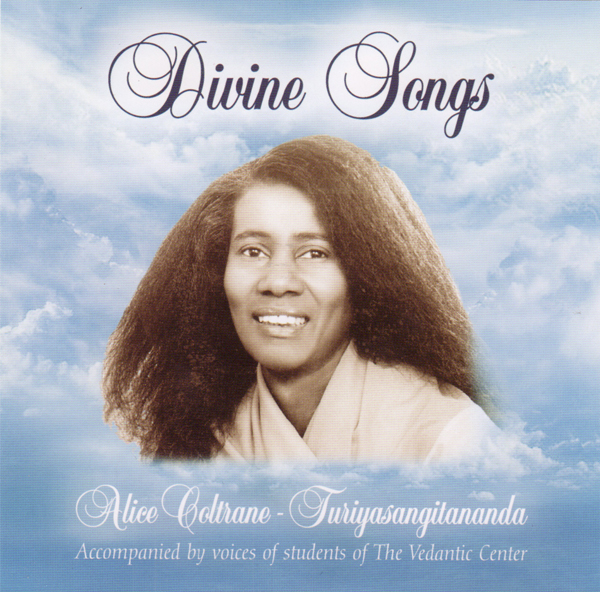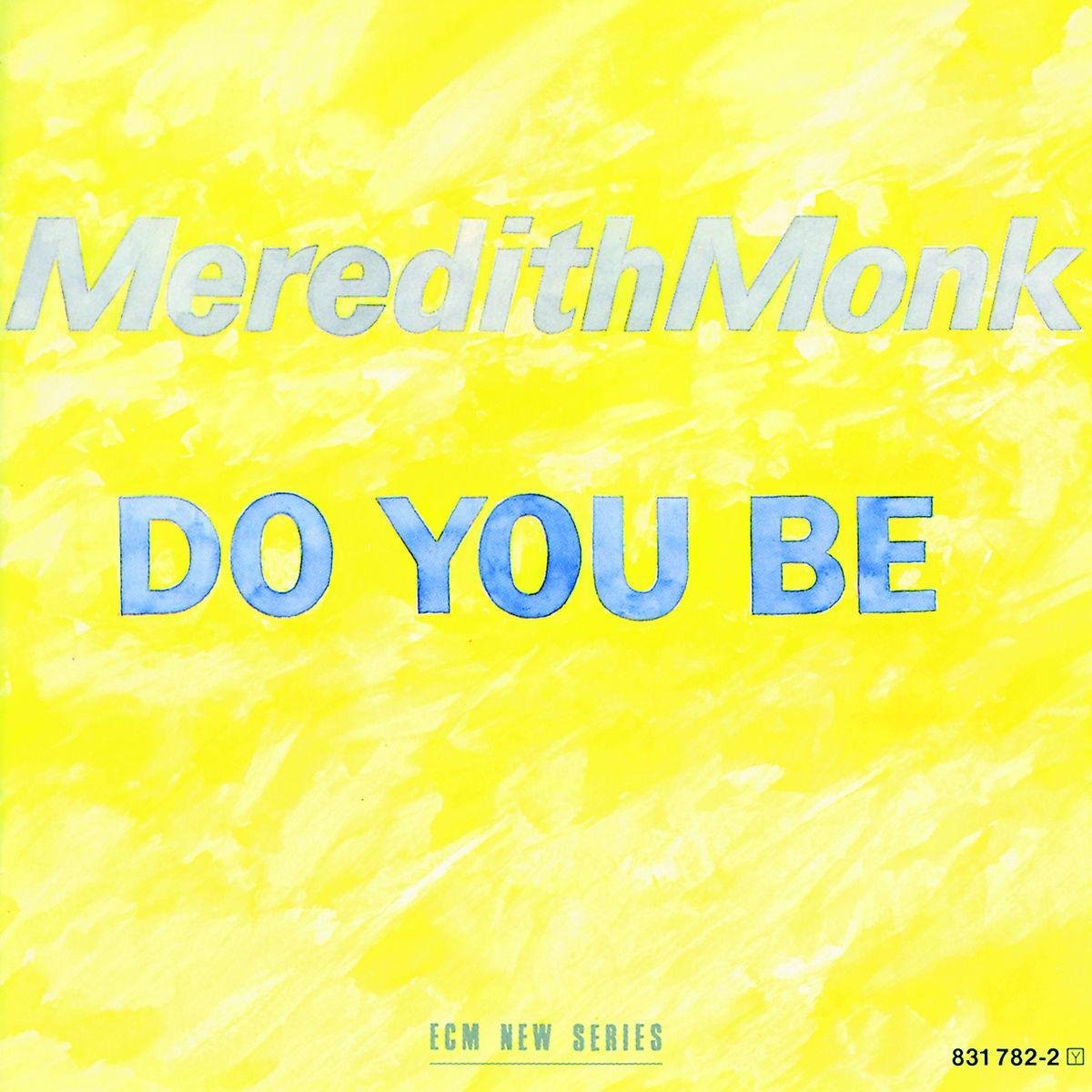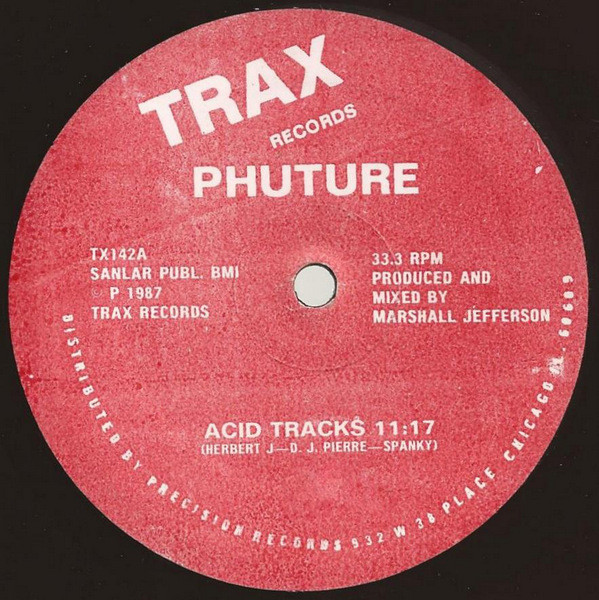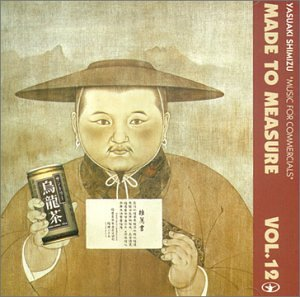 |
buy comp / download |
|
 |
buy / download |
|
 |
download |
|
 |
buy / download |
|
 |
buy |
|
 |
download |
|
 |
buy |
|
 |
buy / download |
|
 |
buy / download |
|
 |
buy |
|
 |
buy |
|
 |
buy |
|
 |
download |
|
 |
download |
|
 |
buy / download |
|
 |
buy / download |
|
 |
download |
|
 |
buy / download |
|
 |
buy |
|
 |
buy |
|
 |
buy / download |
|
 |
download |
|
 |
buy |
|
 |
buy |
|
 |
buy / download |
|
Tag: japan
Yoshio Ojima – Club, 1983

Another early 80’s anomaly, this one released on only 50 numbered cassettes in wooden boxes with silkscreen and Russian constructivist paper inserts. Ojima is probably best known for his catalog of significant environmental works, most notably the gorgeous 1988 two-album collection for the Spiral in Tokyo’s Wacoal Art Center (volume one of which has been lovingly catalogued here), but also for the Tokyo Opera City Art Gallery and the Living Design Center OZONE. He also produced Hiroshi Yoshimura’s Pier & Loft and Motohiko Hamase’s #Notes Of Forestry. (For more Japanese environmental music, see here, here, here, and here.)
Club takes somewhat of a departure from his more ambient works, but you can still hear his propensity for small motifs that build and layer into complex, embroidery-like compositions, particularly on tracks like “Boy In Vision.” Closer “Graduation” is similarly stunning and somber: between its whale-like, slow-motion horns rearing and arcing in the distance, and its deliberately distracting tinny mechanical whirring in the forefront, it reminds me of Hosono’s “Air-Condition,” released the year prior.
Still, if the cover art wasn’t sufficiently indicative, there’s a sense of humor here that isn’t necessarily evidenced elsewhere in his catalog: a spronky suggestion of mechanical toys on “Entrance,” a childlike wonder and marching-feel on “Orientation,” and perhaps most noticeably on the confoundingly good “Club-A.” People who know more than I do about the history of electronic dance music might be able to label this more accurately, but to me this sounds a whole lot like raucous, gnashing proto-techno, or even proto-acid. And then, just like that, we’re returned to the gleefully spaced out synth whirring of “Club-B,” as if nothing unusual had happened. (Though there are a few small nods to futurity on “Days Man” and “Schooling,” whose drum-machine-going-for-a-walk sensibility sounds like a nod to Testpattern–which is a good thing.) As much as I feel like a broken record, this is largely uncategorizable stuff, and a really special window into a genius stretching his legs and taking some worthwhile risks along the way.
Jimmy Murakawa – Original De-Motion Picture, 1982

Deeply weird and cool record from Mariah vocalist Jimmy Murakawa, featuring Yasuaki Shimizu production. New wavier and more scronky than the usual around here, even veering into no wave on tracks like “Luci’s Small Hotel Part 2.” With an inclination towards cavernous metallic clanging, creeping synth lines, and echoey muttering, there are moments that feel more German industrial than Japanese–particularly on standout “Down? Down, Down! / Stay Outta My World,” except by the song’s end it’s morphed into what sounds very much like an unfinished Notorious B.I.G. track. A few other standout moments, like “Beauty” and “Vaporous Actor,” call to mind sparser and more percussive moments on Sakamoto‘s Left Handed Dream, which came out the same year. There’s a tunneling, cavernous sensibility to this that reminds me of Colored Music. It’s real good. If it’s for you, it’s definitely for you.
[Mix for NTS Radio] Getting Warmer Episode 19

Here’s my most recent episode of Getting Warmer for NTS Radio. It sort of feels like a continuation of last month’s mix–slinky, flirty, loungey, and never picking up too much speed. I recently revisited Dusty Springfield’s version of “Spooky” in headphones, and while I’ve been a longtime fan of hers, I was particularly floored by her vocal quality and intonation, so that was the jumping-off point here. I hope you like it! You can download an mp3 version here.
Tracklist:
1. World Standard – Pasio
2. Frank Harris & Maria Marquez – Campesina
3. Miharu Koshi – Tohboh-Sha
4. Yves Tumor – The Feeling When You Walk Away
5. Dusty Springfield – Spooky
6. Márta Sebestyén & Levente Szörényi – András
7. Karin Krog – Just Holding On
8. Quarteto Em Cy – Caminho De Pedra
9. Lena d’Água – Tão
10. Fred Manda – Cartoon In Kartoum
11. Patrice Rushen – Let Your Heart Be Free
12. Solange (no, not that Solange) – Quero Um Baby Seu
13. Gal Costa – Baby
14. Nora Guthrie – Home Before Dark
15. Hiroyuki Namba – Hiru No Yume
[Mix for NTS Radio] Hosono Day

I’m very, very excited to share a two hour mix I made of Haruomi Hosono‘s work, which was a contribution to NTS Radio’s Hosono Day last weekend (here’s to hoping it becomes an annual tradition). As you might imagine, this was simultaneously a joy and a total nightmare to make, as Hosono has contributed to over 900 releases and has refused to be hampered by genre–so rather than trying to pick one vicinity and stay there, I instead tried to find a through-line between my Hosono favorites all over the map. Happily, this selection also gives proper airtime to his fascination with Indian instrumentation–Bollywood, Indian classical, folk, and everywhere in between. At the risk of sounding sentimental, I found myself moved to tears more than once while working on this, as it’s astounding to be confronted by the weight of his genius and innovation while sifting through his archives.
And–there’s more! The lineup of contributors to Hosono Day include some of my favorite artists, labels, and curators, so it was a real thrill to be included among them and to hear so many different expressions of Hosono–I would encourage you to listen to all of it. Happy listening, and a belated happy Hosono Day! You can download an mp3 version of it here.
Tracklist:
1. Haruomi Hosono – Hum Ghar Sajan
2. Haruomi Hosono – The Animal’s Opinion
3. Yellow Magic Orchestra – Seoul Music
4. Haruomi Hosono – Luminescent/Hotaru (edit)
5. Susan – Ah! Soka
6. F.O.E. – Total Eclipse
7. Haruomi Hosono – Laugh-Gas (edit)
8. Love, Peace & Trance – Hush – A Mandala Ni Påli
9. Haruomi Hosono – 若紫
10. Haruomi Hosono – Muji Original Background Music
11. Haruomi Hosono – Air-Condition
12. Haruomi Hosono – Sunnyside Of The Water
13. Interior – Luft
14. Inoyama Land – Wässer
15. World Standard – Pasio (edit)
16. Haruomi Hosono, Shigeru Suzuki & Tatsuro Yamashita – スラック·キー·ルンバ (Slack Key Rhumba)
17. Akiko Yano – Tong Poo
18. Tatsuro Yamashita – Rainy Walk
19. Yukihiro Takahashi – Sea Change
20. Mickey Curtis – Tengoku No Yoru
21. Chiemi Manabe – ねらわれた少女
22. Dark Ducks – Dandy Dandy
23. H.I.S. – Nihon No Hito (Japanese People)
24. Hiroshi Sato – Jo-Do
25. Harry Hosono & The Yellow Magic Band – Worry Beads
26. Pizzicato V – The 59th Street Bridge Song (Feelin’ Groovy)
27. Haruomi Hosono – Sports Men
28. Sandii – Zoot Kook
29. Hiroko Yakushimaru – 透明なチューリップ (Transparent Tulip)
Haruomi Hosono – 源氏物語 (The Tale of Genji), 1987

Another favorite from the Hosono canon. This was the score for the first animated adaptation of The Tale of Genji, a sprawling piece of 11th century literature written by noblewoman Shikibu Murasaki, considered by many to be the first modern novel in recorded history. (Isao Tomita later write his own symphonic adaptation of the story.) The anime was directed by Gisaburō Sugii, and while it only covers a small part of the epic storyline, the score is highly ambitious.

Unlike much of Hosono’s catalogue, here synthesizer mostly acts as an atmospheric texture and instead puts traditional Japanese instruments, particularly koto, flute, and drums, front and center. What’s really astounding about this soundtrack is the layering of instruments, piling them up until they become unfamiliar: droves of fingerpicked strings sound like a hive of insects, waves of gentle hand percussion feel like the swells of inhales and exhales, processed flute suggests the shrieking wind. Despite a pervasive mysteriousness, and even ominousness, this is unmistakably gorgeous music, and structured in such a way that it will appeal to fans of more conventional synthetic ambient music–but retains a feverish futurist-classical elegance all its own.
Tōru Takemitsu – Kwaidan, 1964

A watershed moment in the career of an avant-garde giant. Takemitsu composed several hundred pieces of music, many of them massive and orchestral in scope; scored over 90 films; and published 20 books before his death in 1996. Interestingly, much of his early output was marked by his contempt for traditional Japanese (and, more broadly, non-Western) music, colored by his experiences of the war, during which Japanese music was associated with militaristic and nationalistic cultural ideals. In his own words: “There may be folk music with strength and beauty, but I cannot be completely honest in this kind of music. I want a more active relationship to the present. Folk music in a ‘contemporary style’ is nothing but a deception.” So severe was his enmity with tradition that he famously destroyed several of his own works upon discovering that he had unintentionally incorporated “nationalistic” elements of traditional Japanese scales. An early proponent of musique concrète, his work has often been cast as in synchronicity with Pierre Schaeffer; however, neither were aware of the other at the time (though Takemitsu was an ardent admirer of John Cage).
Still, despite his fierce commitment to avant-garde experimentation, by the 1960s he had started to more deliberately incorporate traditional Japanese scales, elements of folk songs, the tones and modes of Gagaku, and, as evidenced in Kwaidan, ancient instruments like the biwa.
A quartet of heavily stylized supernatural vignettes rendered in intensely saturated color, Masaki Kobayashi’s Kwaidan was the most expensive film in the history of Japanese cinema at the time of its release. Takemitsu turned out a score ambitious enough to match, channeling his ambivalence towards tradition into a mangled, strangled take on the folk sounds of his upbringing. Silence acts as a prominent texture, but in between the strained gaps are twisted shakahuchi lines, shrieking winds, ghostly metallic clangs, splitting wood, an occasional distant drum, Noh-style vocals recalling a storied mass suicide on a battle ship, and a whole lot of that biwa, played with such venomous ferocity that one can only wonder how many strings had to be replaced over the course of recording. Sparse, horrific, and very potent. Enjoy, and happy Halloween!
Ichiko Hashimoto – Mood Music, 1987

Odd that this is my first Ichiko Hashimoto post, given how much I admire her work–though her catalogue covers so much ground that it’s hard to know quite where to start. A trained jazz pianist, composer, and singer, Hashimoto was one half of Colored Music (friendly reminder that this record is so great), made a slew of ambitious solo records, performed with YMO, collaborated with Belladonna of Sadness composer Masahiko Sato, and scored an anime series, all while establishing herself as an powerful and singular composer, arranger, and producer. Though she’s worked across many genres, she’s maintained a signature proclivity towards gently sinister and avant-garde arrangements, and lugubriouis, pillowy vocals (her love of chanson-style singing pops up all over her discography, not just here).
Mood Music might not be her most canonical record, but it’s a personal favorite and has been on repeat recently. Comprised mostly of jazz standards, the record cribs heavily from bossa nova, samba, and exotica, but Hashimoto quietly subverts these textures into something darker, and at times, less familiar. Her quavering, syrupy-swoony orchestration suggests a Scott Walker-esque approach to sentimentality, particularly on thick and headier arrangements like “Poinciana” and “Night and Day.” The record’s two original compositions, “Flower” and “Île De Étrange,” are its most interesting, with the former a white-knuckled, percussionless tower of taut-string urgency, and the latter a hypnagogic, dubby piece of acid jazz. Mood music indeed.
Hiroshi Yoshimura – Wet Land, 1993

A less-heard but very deserving later work from the master, Hiroshi Yoshimura, by multiple requests. Though you’ll recognize a familiar fascination with water sounds, here the focus is on synth rather than piano. A love for pastoral, rolling keyboard motifs is still very present. If anything, by 1993 Yoshimura had burrowed even further into the tension between the natural and the artificial: though Wet Land is clearly preoccupied with visions of nature, here they’re rendered in hyper-synthetic, heavily produced language, and are all the more beautiful for it. Though this is busier than his earlier material, much of it feels in keeping with the hope Yoshimura and his peers had for “environmental music”–which, according to Ashikawa, was
…music that could be said to be an object or sound scenery to be listened to casually. Not music which excites or leads the listener into another world, it should drift like smoke and become part of the environment surrounding the listener. In other words, it is music which creates an intimate relationship with people in everyday life…Also, [it] is not the music of self-expression or a completed work of art; rather it is music which by overlapping and shifting, changes the character and the meaning of space, things, and people.
This is long out of print; however, if you’re interested in Yoshimura’s work, his Music for Nine Post Cards (the first installment in the Wave Notation series) was recently reissued by Empire of Signs and is available for purchase here.
Mix for The Le Sigh

I was lucky to have a very sweet conversation with Hayley at The Le Sigh, a website dedicated to the work of female-identifying and non-binary artists. We talked about early electronic music, the rise and fall of the album download blog, and the politics of music writing, among other things. I also made a 90 minute minute mix of music made by women (though to be clear, men contributed to many of these songs in different capacities). As you can imagine, this was way too much to fit into one mix, so I focused mostly on synth pioneers, experimental, and new age, with a few wildcards thrown in. The mix opens with Wendy Carlos giving a verbal walkthrough of some technical aspects of her synth process, and ends with Nina Simone ripping our hearts out. You can download an mp3 version here.
Tracklist:
1. Wendy Carlos – Electronic Pointillism & Hocketing (from Secrets of Synthesis) / Sonata in G Major, L. 209/K. 455 (Scarlatti)
2. Phew – Expression
3. Delia Derbyshire – The Wizard’s Labratory
4. Pauline Oliveros – Wolf
5. Michele Musser – In The Air
6. Pauline Anna Strom – The Unveiling
7. Laurie Spiegel – Drums (Excerpt)
8. Deutsche Wertarbeit – Auf Engelsflügeln
9. Virginia Astley – I’m Sorry
10. Laurie Anderson – Kokoku
11. Miyako Koda – A Story Teller Is The Sun
12. Björk – Come To Me
13. Kate Bush – Delius
14. Bridget St. John – Many Happy Returns
15. Joanna Brouk – Winter Chimes
16. Alice Coltrane – Er Ra
17. Claire Hamill – Winter: Sleep
18. Suzanne Ciani – The Third Wave: Love In The Waves
19. Gal Costa – Volta (Live)
20. Nina Simone – Don’t Smoke In Bed (Live)